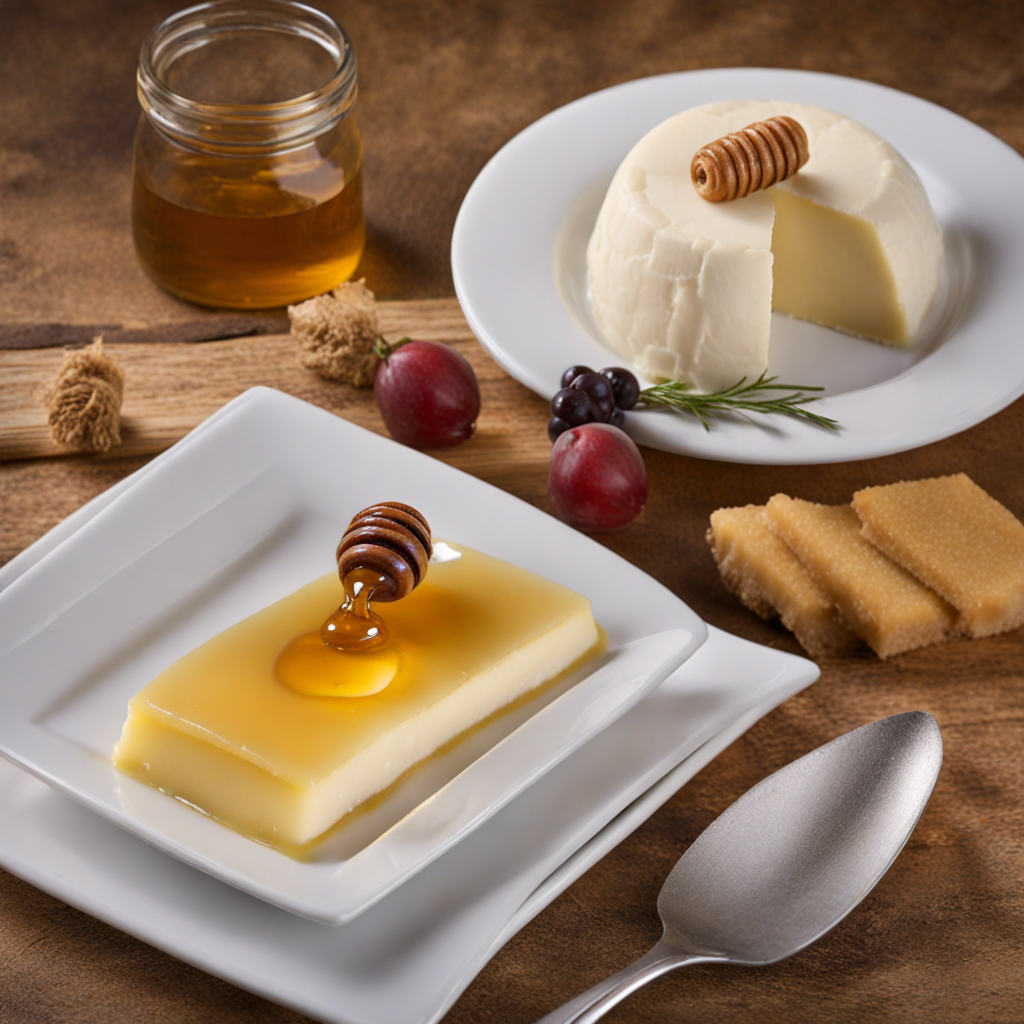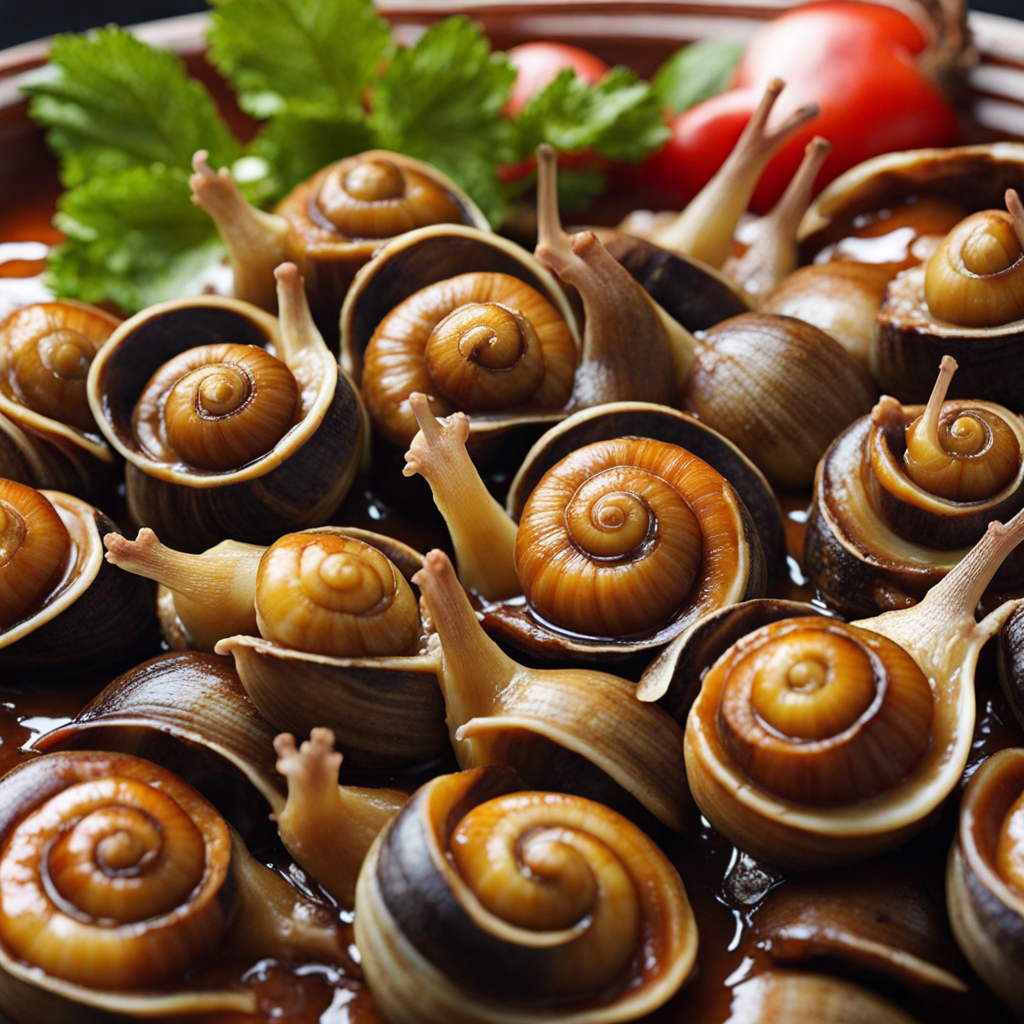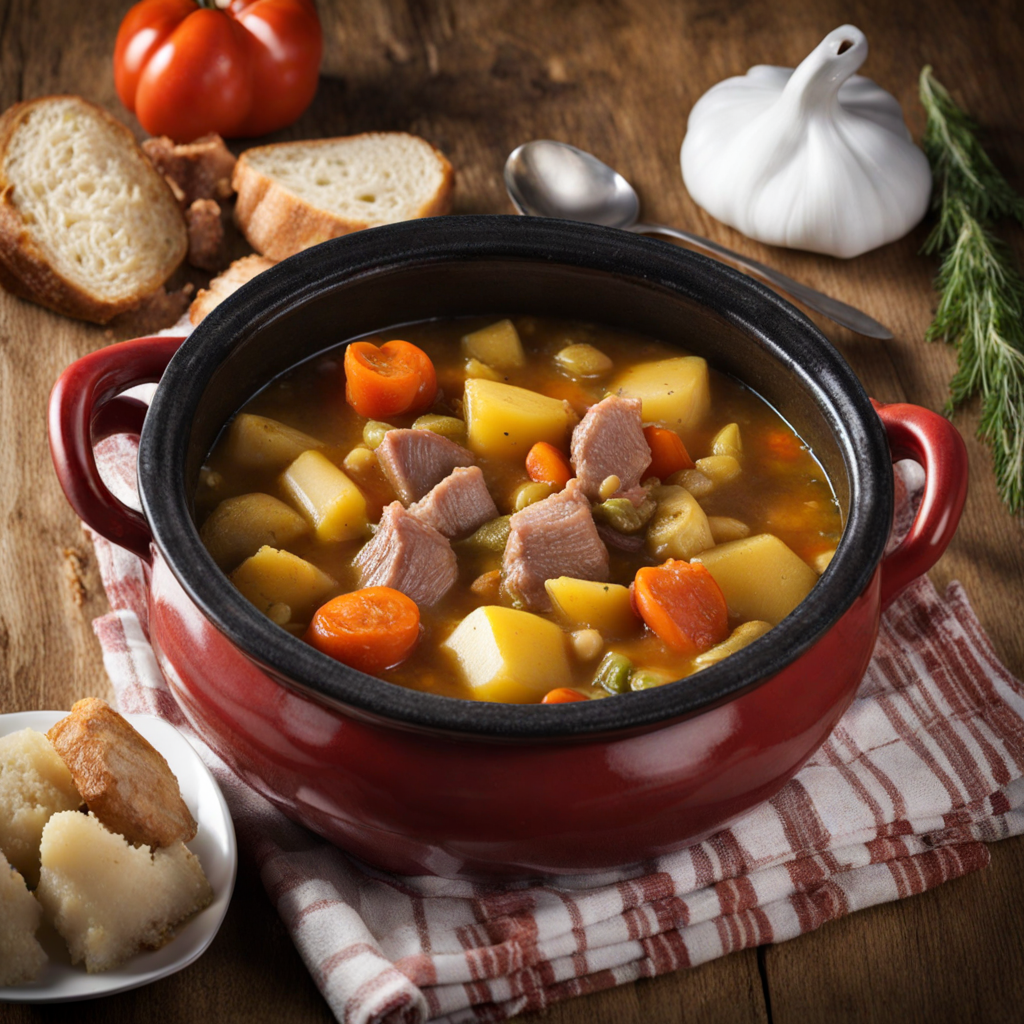Mel i mató
Mel i mató is a delightful Andorran dish that showcases the simple yet rich flavors of the region. At its core, it consists of fresh cheese, known as mató, which is made from sheep or goat's milk. This cheese is characterized by its soft, creamy texture and mild taste, making it an excellent canvas for other ingredients. The dish is often drizzled with a generous amount of honey, or mel, which adds a sweet and fragrant contrast to the cheese's subtle tang. The combination of these two elements creates a harmonious balance that is both refreshing and indulgent, perfect for a light dessert or a rustic snack. The beauty of Mel i mató lies in its simplicity and the quality of its ingredients. The honey used is typically local, sourced from the lush pastures and wildflowers that thrive in Andorra's mountainous landscape. This not only enhances the flavor profile but also provides a connection to the region's agricultural heritage. The dish is often garnished with nuts, fruits, or even a sprinkle of cinnamon, which adds textural and flavor complexity, inviting the eater to explore the different layers of taste with each bite. Enjoying Mel i mató is more than just a culinary experience; it is a journey into Andorra's rich culture and traditions. Often served during festive occasions or family gatherings, this dish embodies the warmth and hospitality of the Andorran people. The combination of the creamy mató and the sweet, aromatic honey creates a nostalgic feeling, evoking memories of cozy meals shared with loved ones. Whether you are indulging in it after a hearty meal or savoring it as a midday treat, Mel i mató is a delightful way to discover the unique flavors of Andorra.
How It Became This Dish
Mel i Mató: A Sweet Journey Through Andorran Tradition Origins Nestled in the heart of the Pyrenees, Andorra is a small yet enchanting principality known for its stunning landscapes, rich culture, and unique culinary traditions. Among the treasures of Andorran cuisine, one dish stands out: Mel i Mató. This delightful dessert, consisting of fresh cheese (mató) drizzled with honey (mel), encapsulates the essence of Andorran heritage, reflecting the region’s pastoral lifestyle and agricultural bounty. The origins of Mel i Mató can be traced back to the agrarian communities of the Pyrenees, where livestock farming and dairy production have been fundamental to the economy and culture. For centuries, Andorran shepherds and farmers cultivated their lands and raised goats and cows, producing an array of dairy products. Mató, a soft, fresh cheese made primarily from cow or goat milk, emerged as a staple food, providing essential nutrition for local communities. The honey component of the dish is closely linked to the flourishing beekeeping practices in the region, where wildflowers abound and bees thrive amidst the pristine mountain landscapes. Cultural Significance Mel i Mató is more than just a simple dessert; it is a symbol of Andorran identity, encapsulating the harmonious relationship between the land, its people, and their culinary traditions. The dish’s ingredients are emblematic of the region's agricultural practices and its reliance on natural resources. The use of local honey, often sourced from nearby hives, showcases the importance of beekeeping in Andorran culture. Historically, honey has been revered not only for its sweetness but also for its medicinal properties, making it a cherished ingredient in both culinary and health practices. In Andorran households, Mel i Mató is often served during festive occasions, family gatherings, and communal meals. It is a dish that transcends social barriers, bringing people together to share a moment of joy and celebration. The preparation of Mel i Mató is often a communal affair, with families gathering to make cheese and collect honey, thus reinforcing bonds among community members. This communal aspect is pivotal to Andorran culture, where food acts as a medium for storytelling, connection, and the preservation of traditions. Development Over Time As Andorra evolved from a rural society into a more modernized nation, Mel i Mató maintained its status as a beloved traditional dessert. Throughout the 19th and 20th centuries, the dish adapted to changing social dynamics and culinary trends while still honoring its roots. The rise of tourism in Andorra, particularly in the mid-20th century, brought an influx of visitors eager to experience the country’s unique flavors. As a result, Mel i Mató found its way onto the menus of local restaurants and mountain lodges, allowing the dish to reach a broader audience. In the 21st century, as global interest in authentic culinary experiences surged, Mel i Mató gained recognition beyond Andorra’s borders. Food enthusiasts and travelers began to appreciate the simplicity and elegance of the dish, leading to its inclusion in various gastronomic festivals and events. Chefs began to experiment with the traditional recipe, incorporating modern techniques while maintaining the essence of the dish. Variations emerged, with some chefs adding nuts, berries, or spices to enhance the flavor profile, reflecting a fusion of traditional and contemporary culinary practices. Despite these adaptations, the core elements of Mel i Mató remain unchanged. The dish continues to be prepared using locally sourced ingredients, with an emphasis on quality and authenticity. Many Andorran families still uphold the traditional methods of cheese-making, passing down recipes and techniques through generations. This commitment to preserving culinary heritage ensures that Mel i Mató remains a staple of Andorran cuisine, cherished by both locals and visitors alike. A Taste of Andorra To truly appreciate Mel i Mató, one must experience it in its natural context. Picture a quaint Andorran village, with stone houses nestled among the mountains, the air filled with the scent of wildflowers and fresh dairy. As you enter a local eatery, the warm atmosphere is inviting, and the menu proudly showcases Mel i Mató. The dish arrives beautifully presented: a generous portion of creamy mató topped with golden honey, perhaps accompanied by a sprinkling of crushed nuts or fresh seasonal fruits. Each bite offers a delightful contrast of textures—the smooth, slightly tangy cheese harmonizing with the sweet, viscous honey. It is a celebration of simplicity, allowing the natural flavors to shine. As you savor the dish, you are not only enjoying a dessert but also partaking in a centuries-old tradition that tells the story of Andorra’s people, their land, and their enduring love for good food. Conclusion Mel i Mató is more than just a dessert; it is a cultural emblem that embodies the spirit of Andorra. Its origins in the pastoral lifestyle of the Pyrenees, its significance in communal gatherings, and its evolution through time reflect the resilience and adaptability of Andorran culinary traditions. As travelers continue to seek authentic experiences, Mel i Mató stands as a testament to the rich history and vibrant culture of this small yet remarkable principality. In every bite of Mel i Mató, one can taste the passion, history, and pride of the Andorran people. It reminds us that food is not merely sustenance; it is a medium through which we connect with our past, our culture, and each other. As long as Mel i Mató continues to be made and shared, the essence of Andorra will thrive in the hearts and palates of those who experience it.
You may like
Discover local flavors from Andorra







